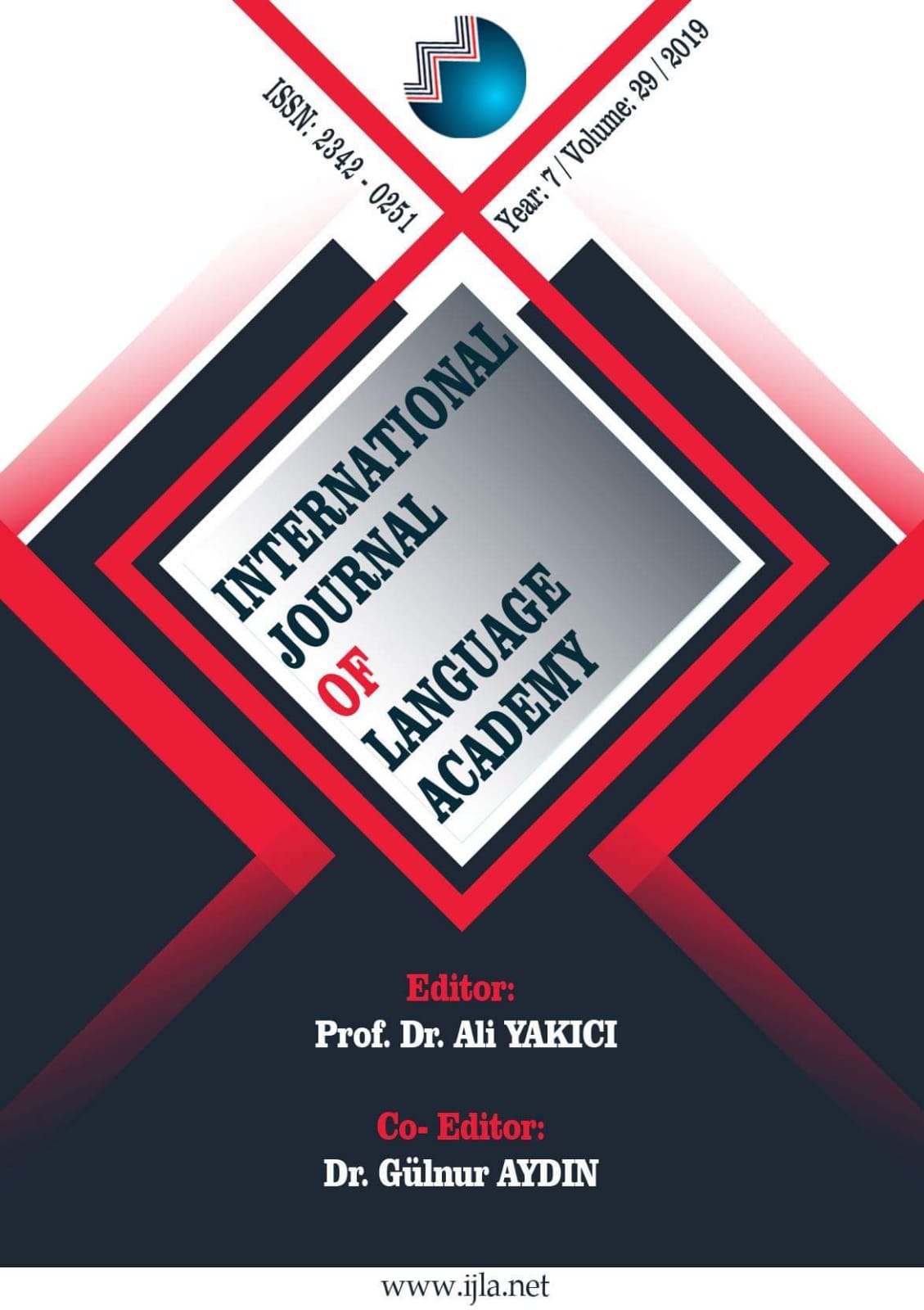Author :
Abstract
İki ve/veya çok dillilerin beyninde konuşma faaliyeti esnasında dil kullanımından sorumlu yürütücü işlevleri yerine getiren nöronları birbirine bağlayan sinapsların sayısında artış görülür. Bu artış kişilerde konuşma sürecinden sorumlu dil ağına ek olarak prefrontal korteksin faaliyete geçmesiyle meydana gelir. Dil kullanımında yürütücü işlevleri yerine getiren nöronları birbirine bağlayan sinapsların sayısının artmasının dışında prefrontal korteksin de faaliyete geçmesiyle konuşma lobu yeniden şekillenir; bu da beynin bu alanının boyutunun büyümesine ve buna koşut olarak işlevinin de artarak güçlenmesine neden olur. Beynin bu şekilde bir değişim ve gelişime uğraması bilişsel performansın da gelişmesine katkı sağlanır. Yapılan birçok araştırmanın sonucuna göre iki/çok dilliler akademik başarı, uzun vadeli sağlık ve esenlik, özdenetim, esnek görev değiştirme yeteneği, çalışma belleği ve yoğunlaşma gerektiren görevlerde tek dillilerden çok daha başarılıdırlar. Beynin fazladan bu tür faaliyetlere odaklanabiliyor olması ve bununla ilintili yararların kapsamı -hangi dilin/dillerin konuşulduğuna bakılmaksızın- hepsinde aynıdır. Burada belirleyici olan etken, kişinin ikinci dili kullanma sıklığı, sahip olduğu dilsel yeterlilik, normlara uygun dilbilgisel yapılar hakkındaki bilgisinin yanı sıra dili edindiği/öğrendiği yaştır
Keywords
Abstract
There is an increase in the number of synapses which connecting neurons and perform executive functions and responsible for speech usage during brain activity of bi/multilingualist. This increase is due to the activation of the prefrontal cortex, which is responsible for the speech process. By activating the prefrontal cortex in addition to neurons that performing executive functions during language use, the lobe of speech is reshaped. As a result, the extent of this area by brain causes its function to become stronger. Such a change and development of the brain contributes to the development of cognitive performance.According to the results of many studies, bi/multilingual persons are more successful than monolinguals in terms of academic performance, long-term health and well-being, self-control, flexible workability, working memory and concentration. The degree to which the brain can focus on such activities and the level of benefits it brings - no matter which languages are spoken- is the same. The determining factors here are the frequency of using the second language, speech competence, knowledge of the grammatical structures in accordance with the norms and the age at which they acquire the language.
Keywords
- Akçaylı, N. 1987 Die Türken in der Bundesrepublik Deutschland - Probleme aus türkischer Sicht. In: Schaffner, F. (ed.), 61-71.
- Baker, C. 1993 Foundations of Bilingual Education and Bilingualism. Clevedon: Multilingual Matters Ltd.
- Cummins, J. 1979 Cognitive/academic language proficiency, linguistic interdependence, the optimum age question and some other matters. Working Papers on Bilingualism, 19: 197-205.
- De Bleser, Ria/Paradis, Michel (2006). Mehrsprachigkeit macht schlau. In: Gehirn & Geist. Spektrum der Wissenschaft, Heidelberg, 6/2006, 54-57
- Franceschini, R. (2002). Das Gehirn als Kulturinskription. In: Ein Kopf - viele Sprachen: Koexistenz, Interaktion und Vermittlung. Shaker Verlag, 45-62. Aachen, .
- Franceschini, R. (2002a). Code-switching and the notion of Code in linguistics: proposals for a dual focus model. In: Psycholinguistic Review 98, 1998, 604-624. In: Ein Kopf-viele Sprachen: Koexistenz, Interaktion und Vermittlung. Shaker Verlag, Aachen,
- Genesee, F. (1981). A comparison of early and late second language learning. Canadian Journal of Behavioural Science, 13, 115-127.
- Genesee, F., Nicoladis, E., & Paradis, J. (1995). Language differentiation in early bilingual development. Journal of Child Language, 22, 611-631.
- Gombos, G. (2008). Mehrsprachigkeit zwischen Bildungschance und Bildungsrisiko. Erziehung und Unterricht. Österreichische Pädagogische Zeitschrift, 158, 10–19.
- Hansen, R. 1989 Türkische Deutsche, deutsche Türken >ein bißchen von da und ein bißchen von da-Re-Migration und Identitätskonflikte türkischer Jugendlicher aus Izmir/Saarbrücken. Lauderdale: Breitenbach
- Harley, B. (1989). Age in second language acquisition. San Diego: College Hill Press.
- Kleppin, Karin (2002): Motivation. Nur ein Mythos? Teil II. In: Deutsch als Fremdsprache 39,1
- Kramer, Katharina (2003): „Wie werde ich ein Sprachgenie?“ Geist und Hirn 2: 48-50.
- Krashen, S.D. (1973). Lateralization, language learning, and the critical period: Some new evidence. Language Learning, 23, 63-74.
- Krashen, S.D., Long, MA, and Scarcella, R.C. (1979). Age, rate, and eventual attainment in second language acquisition. TESOL Quarterly, 13, 573-582.
- Krashen, S.D., Scarcella R.C., and Long, M.A. (Eds.). (1982). Child-adult differences in second language acquisition. Rowley, MA: Newbury House.
- Lenneberg, E. (1967). Biological foundations of language. New York: John Wiley and Sons Mampe, B., Angela D. Friederici, Christophe, A., Wermke, K (2009). Newborns' Cry Melody Is Shaped by Their Native Language, Current biology: CB, ISSN: 18790445, Vol: 19, Issue: 23, Page: 1994-7
- Newport, E. (1990). Maturational constraints on language learning. Cognitive Science, 14, 11-28.
- Penfield, W., & Roberts, L. (1959). Speech and brain-mechanisms. Princeton, NJ: Princeton University Press
- Skutnabb-Kangas, T. 1981 Bilingualism or Not: The Education of Minorities. Clevedon: Multilingual Matters.
- Gold, Brian T. et al. (2013). Lifelong Bilingualism Maintains Neural Efficiency for Cognitive Control in Aging. The Journal of Neuroscience, DOI:10.1523/JNEUROSCI.383712.2013.
- Grotjahn, Rüdiger; Schlak, Torsten & Berndt, Annette (2010): Der Faktor Alter beim Spracherwerb: Einführung. In: Zeitschrift für Interkulturellen Fremdsprachenunterricht [Online] 15: 1.10.09.2018.
- http://www.fmri.org/publications/Kim_Hirsch_Distinct_Cortical.pdf, 15.09.2018.
- http://www.ncbi.nlm.nih.gov/pubmed/20180956, 05.09.2018)
- https://www.dicle.edu.tr/Contents/668e0937-6619-4e88-bb90-d660c1eab157.pdf, 14.09.2018.
- https://www.ethnologue.com/, 10.09.2018.
- Kim, Karl H.S. (1997). Distinct cortical areas associated with native and second languages. Nature 388 (10 July): 171-174. Elektronische Veröffentlichung http://www.fmri.org/pdfs/Kimetal.1997.pdf, 15.09.2018.
- Stangl, W. (2018). Mehrsprachigkeit – Chance oder Risiko? Werner Stangls Pädagogik News. www: http://paedagogik-news.stangl.eu/mehrsprachigkeit-chance-oderrisiko/ (2018-09-06).
- Tutaş, N. (2007). Yabancı Dil Öğrenmede Yaş Faktörü, Selçuk Üniversitesi, Sosyal Bilimler Enstitüsü Dergisi, http://dergisosyalbil.selcuk.edu.tr/susbed/issue/view/21, 25.09.2018
- Wartenburger, Isabell/ Hauke, R./ Heekeren, J.A./ Stefano, F./ Cappa, A.V./, Perani, D. (2003): “Early Setting of Grammatical Processing in the Bilingual Brain”. Neuron 37: 159-170.
- Werker et al., (2010) University of British Columbia, Vancouver in Psychological Science, Online-Vorabveröffentlichung, DOI: 10.1177/0956797609360758; Bild der Wissenschaften, News 18.2.2010, 08.008.2018.
- Whitney M. Weikum, (2007) Visual Language Discrimination in Infancy, Science 25 May 2007: Vol. 316. no. 5828, p. 1159 DOI: 10.1126/science.1137686





